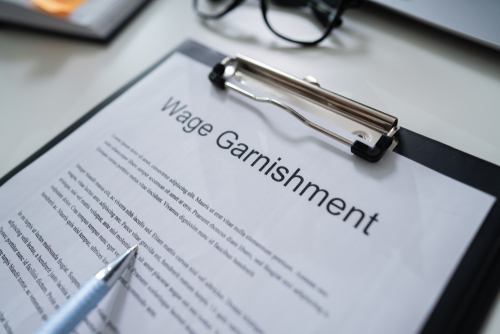 According to the United States Department of Labor’s Consumer Credit Protection Act (CCPA), wage garnishments are a complex legal process for employers to account for when it comes to employment matters. This article specifically refers to Title III of the Consumer Credit Protection Act.
According to the United States Department of Labor’s Consumer Credit Protection Act (CCPA), wage garnishments are a complex legal process for employers to account for when it comes to employment matters. This article specifically refers to Title III of the Consumer Credit Protection Act.
Usually authorized through a court order, a wage garnishment directs an employer to withhold or garnish an employee’s wages for a certain amount or percentage to satisfy an outstanding debt. Wage garnishments also can be implemented for delinquent tax obligations and other debts owed to federal agencies of the U.S. federal government, as well as for state-level tax collectors.
Another consideration for Title III is that for a single debt, employees may not be fired; but if an employee’s earnings are garnished for two or more distinct debts, an employer has the discretion to involuntarily separate an employee from its business. This law also permits varying amounts and percentages of an employee’s “disposable earnings” that may be withheld.
The first step is determining how earnings are defined in the course of deciding the final wage garnishment calculation. Examples include but are not limited to retirement and pension payments to the employee, hourly wages, yearly salaries, commissions, bonuses, along with profit sharing, etc.
When it comes to lump-sum payments, the CCPA requires counting earnings that are for personal services, but not including non-personal service-related lump-sum payment compensation as the first step when calculating the final wage garnishment.
Defining Disposable Earnings
The final amount able to be garnished is determined by the employee’s disposable earnings. This is defined as the earnings remaining once legally mandated deductions are factored into an employee’s earnings. Example deductions include local, federal and state taxes, along with withholdings for unemployment, Medicare and Social Security taxes. Voluntary deductions, such as health premiums, voluntary retirement plan contributions, etc., are not factored into the disposable earnings calculation.
When it comes to regular garnishment guidelines, which include non-support, bankruptcy or tax-based requests, for both state and federal taxes, the maximum weekly amount is the smaller amount of either one-fourth of the worker’s disposable earnings or how much the worker’s disposable earnings exceed 30 times the U.S. minimum wage of $7.25 per hour x 30 hours = $217.50 (as of June 2023).
Looking at a weekly view, if disposable earnings are $217.50 or less, no garnishment can occur. If disposable earnings between $217.50 and up to $290 are considered, only $72.50 may be garnished, depending on how much the outstanding debt is in total. If the worker’s disposable earnings exceed $290 for a weekly pay period, up to one-fourth of the pay period’s disposable earnings can be considered to be garnished. It’s important to note that some bankruptcy court orders, state/federal tax debts and court orders for child support and/or alimony are not necessarily subject to the garnishment ceilings discussed above.
While this information is not comprehensive for employers, it’s important to understand all the federal, state and local regulations to ensure compliance is achieved to reduce the chances for adherence complications.


